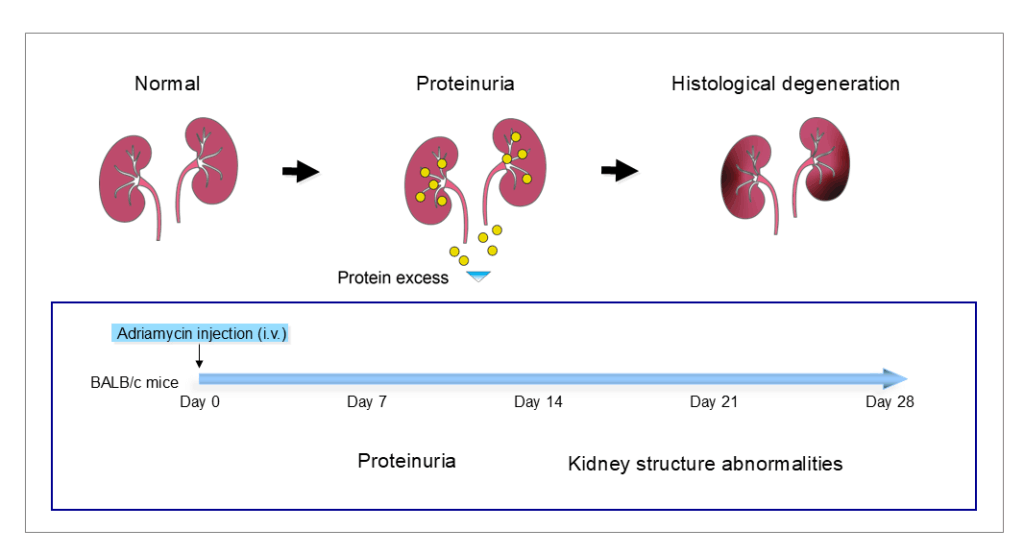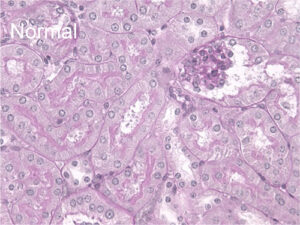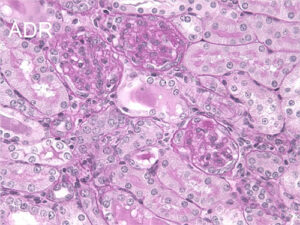アドリアマイシン誘発性腎症モデルは、慢性腎臓病(CKD)の早期から中期までの病態進行における薬理学的薬剤評価に利用できる、よく特徴づけられたモデルである。このモデルは、原発性巣状分節性糸球体硬化症(FSGS)によるヒトのCKDを反映している。
我々はBALB/cマウスに0日目にアドリアマイシンを静脈内投与し、7日目から21日間の治療期間を含む28日間のモデルを確立する。疾患進行過程において、本モデルはタンパク尿に加え、糸球体硬化症を伴う足細胞損傷、尿細管間質性炎症および線維化といった腎構造異常を示す。

組織病理学的分析
PAS染色(尿細管損傷指数、糸球体硬化症)
シリウスレッド染色(コラーゲン沈着/線維化の評価)
生化学的分析
血清尿素窒素(BUN)
血清クレアチニン
尿中アルブミン/クレアチニン比
尿中NGAL
その他
体重変化
腎重量


図1.ADRの腎臓PAS染色画像
正常マウスに比べて、ADRモデルではメサンギウム基質の増生が認められる。
バルプロ酸(VPA)はヒストン脱アセチル化酵素阻害剤であり、抗炎症作用および抗線維化作用を有する。アドリアマイシン誘発性腎症モデルにおいて、VPAはタンパク尿および腎損傷を軽減することが示されている。当モデルを用いた複数の研究においてVPAを基準対照として使用し、血清BUN、NGAL、尿細管損傷指数、腎線維化における治療効果の改善を確認している。
CKDおよびAKIに対する薬剤の薬理学的有効性評価のため、
以下のモデルも提供している:
アデニンモデル
葉酸モデル